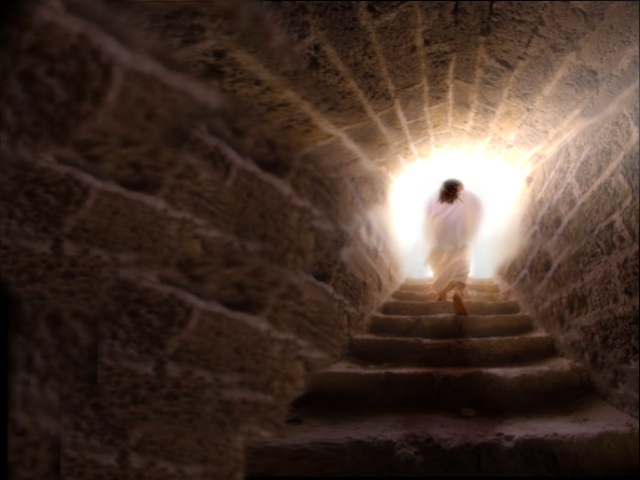
Esta entrada también está disponible en: Spanish
How do you know Jesus rose from the dead?
I believe the most important question in Christianity is: did Jesus actually—as a historical event—rise from the dead? The apostle Paul agreed that this issue is key. He wrote in 1st Corinthians 15 that if Jesus wasn’t raised, our faith is “worthless” and we are worthy of “pity.”
If Jesus wasn’t raised, our faith is “worthless” and we are worthy of “pity.”
Dr. Gary Habermas decided to investigate what historians believe about some key aspects of the life of Jesus of Nazareth related to the resurrection claim. This included all types of scholars: agnostic, atheist, and theists. He tracked over 3400 scholarly sources in French, German and English since 1975. Habermas affirms that you can “count the exceptions with one hand, maybe two” related to the scholars that disagree with these facts.1
It is worth clarifying that these facts are well evidenced by historiography and that is the reason the majority of scholars grant them. These facts are as follows:
-
Jesus died by crucifixion [core fact #2]
-
He was buried
-
Jesus’ death caused the disciples to despair and lose hope believing his life had ended
-
The tomb was discovered empty a few days later
-
The disciples had experiences which they believed were literal appearances of the risen Jesus [core fact #3]
-
The disciples were transformed from doubters who were afraid to identify themselves with Jesus to bold proclaimers of his death and resurrection [core fact #1]
-
This message was the center of preaching in the early church
-
This message was especially proclaimed in Jerusalem, where Jesus died and was buried shortly before.
-
As a result of this preaching the church was born and grew
-
Sunday became the primary day of worship
-
James, who had been a skeptic (brother of Jesus), converted to the faith after seeing the risen Jesus
-
A few years later, Paul was also converted by an experience which he, likewise, believed to be an appearance of the risen Jesus [core fact #4]
These facts are taken from a reduced number of manuscripts that even critical scholars consider authentic historical sources (1 Cor. 15, Mark, John, Galatians, Acts). There have been many different theories throughout history to try to explain away the resurrection as a fabricated myth. We can test these theories and see if they can explain all the facts (1-12).
Let’s review the most common:
- Unknown Tomb Theory. Jesus’ body was thrown into a mass grave unknown to the disciples, so they created the “empty tomb” theory and a resurrection story. ISSUES with this Theory: It does not explain facts 4-12, chiefly, the conversion of the disciples from doubters to proclaimers, including Paul and James’ conversion.
- Wrong tomb Theory. The women were confused and went to the wrong tomb. ISSUES: It does not explain facts 5-12.
- Legend Theory. The resurrection is a fictional story developed over time to vindicate a leader long dead. ISSUES: It does not explain any of the facts. Misses all 12 points!
- Twin Theory. Jesus died and was buried but shortly after his long lost identical twin brother appeared and was worshiped as the risen Jesus. ISSUES: It does not explain the empty tomb which was a testable fact. It is also evident that his brother James would recognize an impostor. The followers would have noticed differences in speech and dialect. This would be suicidal, as the twin brother would be subject to go on exile because the Jewish authorities would want to kill him too, not to mention an impostor would need to inflict self-wounds to mimic a crucifixion. It is also a completely ad-hoc theory; it is not mentioned in any historical source except the Gnostic gospel of Thomas which is known as a later forgery.
- Hallucination theory. The disciples had hallucinations. ISSUES: Does not explain 5, 11, 12. Hallucinations are personal and testable, not shared. Jesus appeared to multiple groups at different times. The disciples were not expecting a risen Jesus.
- Spiritual Resurrection/Existential Resurrection. Jesus did not rise bodily but metaphorically “in people’s hearts.” ISSUES: It does not explain 4, 5, 11, 12.
- Disciples Stole the Body. ISSUES: Here we should point that people will die for something they truly believe, but here the disciples where in the position to know the truth, and they certainly would not die for something they knew was a lie. Liars are poor martyrs. It doesn’t explain 5, 6, 11, 12.
- The Jewish Authorities hid the body. ISSUES: It doesn’t explain 5-12.
- Soon Theory. Jesus was not completely dead, but revived inside the tomb. ISSUES: Even if Jesus had been able to remove his burial garments, roll the stone away, and walk all the way to the disciples, since he was beaten, disfigured, wounded and pierced, the last thing the disciples would think is that Jesus was risen; they would have called for medical support! It does not explain 1 and 6.
- Conspiracy Theory. Jesus, Joseph of Arimathea and another unnamed man plotted to fulfill OT prophesies through a mock death and resurrection. ISSUES: It does not explain 5, 6, 11, 12.
- Jesus was an Alien. ISSUES: By proper definition, he was an alien as he had power from God, but in the end this theory is ad-hoc, is implausible given the context of Jesus’ life, and a theory which explains everything ultimately explains nothing.
The only explanation that fits all the data and also the context of Jesus’ life is a supernatural bodily resurrection from the dead. Only this explains facts 1-12. It is therefore reasonable to believe that Jesus rose from the dead as a historical fact.
For a more detailed argument in favor of the resurrection of Jesus please see my article: Resurrection of Jesus: Fact or Fiction.
- Gary Habermas, “The Minimal Facts Approach to the Resurrection of Jesus”, Personal Web Site, http://www.garyhabermas.com/articles/southeastern_theological_review/minimal-facts-methodology_08-02-2012.htm (accessed November 11, 2013).



